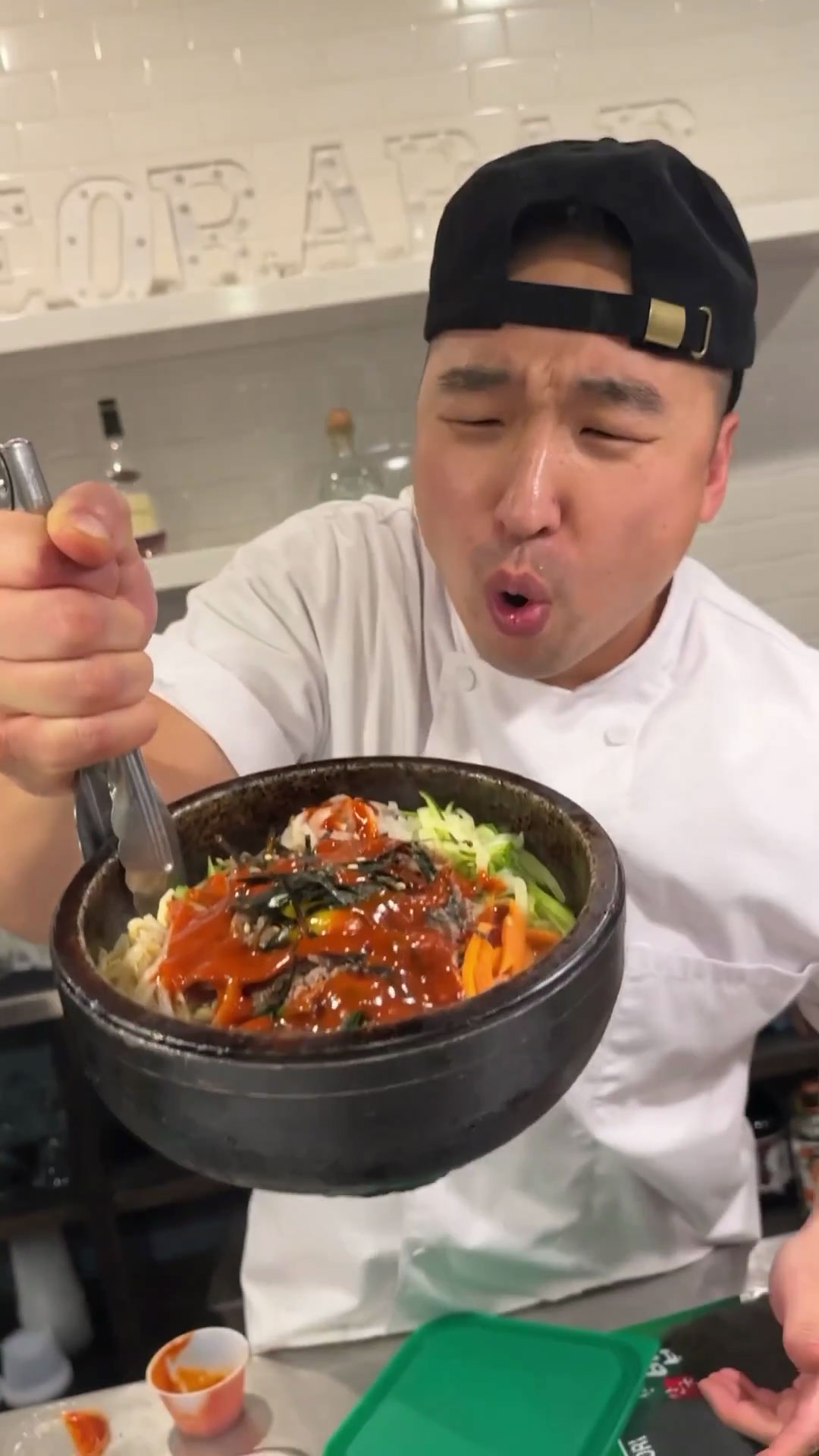
Bibimbap is one of the most well-known Korean dishes in the world. This seemingly simple dish transforms the humble rice and vegetables into a flavorful and comforting meal.
Bibimbap means “mixed rice”. In essence, this is what you do because you mix rice, seasoned vegetables, a choice of protein, and gochujang sauce. This can either be served in a big bowl or a stone pot and as you mix it thoroughly, the better it will taste.
There are several ways to prepare this dish. It can range from easy—where you just throw in the rice, whatever banchan you have in the fridge, some nori and fried egg, then top it with the gochujang, or a bit tedious—where you prepare each component carefully one by one. Variations of bibimbap include gochujang rice and Al Bap!
Regardless of how you prefer to make it, it’s worth the effort. When I am going through something and just having a rough day, this is my go-to comfort food because it has everything I need for minimal effort. It’s also not hard to like so many people know and love this dish. It can be as indulgent yet healthy as you like!
Bibimbap Ingredients
Disclaimer: I get a small commission at no additional cost to you when you make a qualified purchase under the affiliate links.
Rice
The main base of the dish is rice. You can use short or medium-grain white rice or to make it healthier—brown or mixed-grain rice. There’s no strict rule on what to use, any type is amenable for this dish. While freshly cooked rice is great, leftovers are also okay since we will also heat this up!
If you want a noodle alternative, try bibim guksu!
Seasoned Vegetables
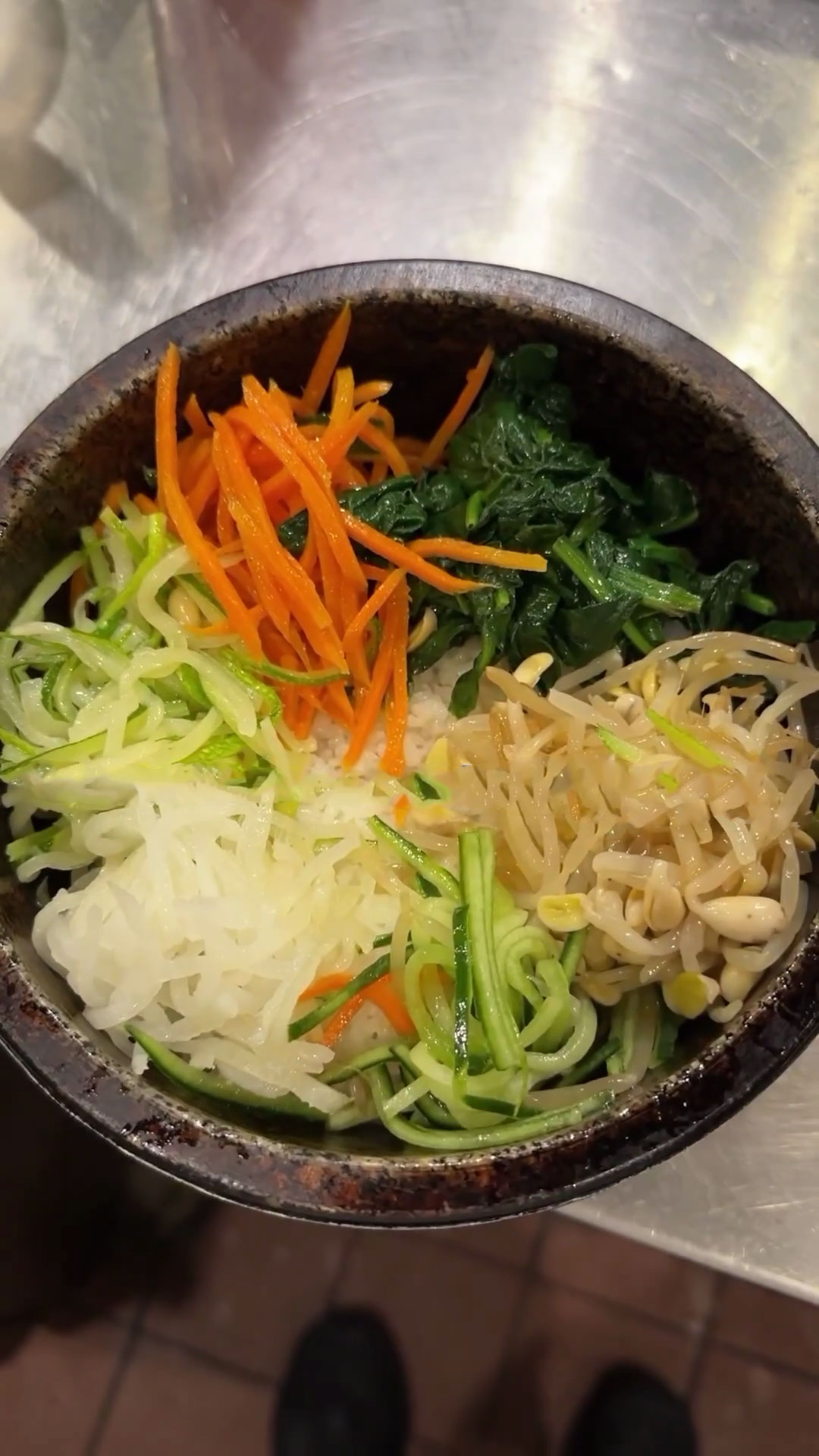
There is an extremely wide variety of vegetables that you can use in this dish. It can range from the kimchi/pickled vegetables you have at home or seasoned/sauteed vegetables you can prepare.
- Kimchi – Chop into small bitesize pieces.
- Spinach, Beansprouts – Quickly blanche, drain, and squeeze out excess water. Season with garlic, salt, sesame oil, and sesame seeds.
- Carrots, Zucchini, Bell Pepper, Mushrooms (Shiitake, Black Fungus, Enoki) – Saute with a little bit of salt.
- Radish, Cucumber – Salt, drain, and season with soy sauce or fish sauce, sesame oil, and sesame seeds.
- Nori – Crumble it up.
- Lettuce Leaves – Simply clean and chop them to bite-sized pieces.
Seasoning the vegetables, even as simple as with salt, elevates its unique flavors, textures, and colors, and allows it to add depth to the byproduct of bibimbap. Whatever you choose, though, just slice them into equal matchstick sizes using a mandolin so that it’s easy to mix and scoop.
Any Korean knows that bibimbap doesn’t have to be complicated. It can be as simple as just adding lettuce and nori to your rice! But if you plan to make bibimbap from scratch, just prepare these ahead, store them in the fridge, and assemble them as needed.
Choice of Protein
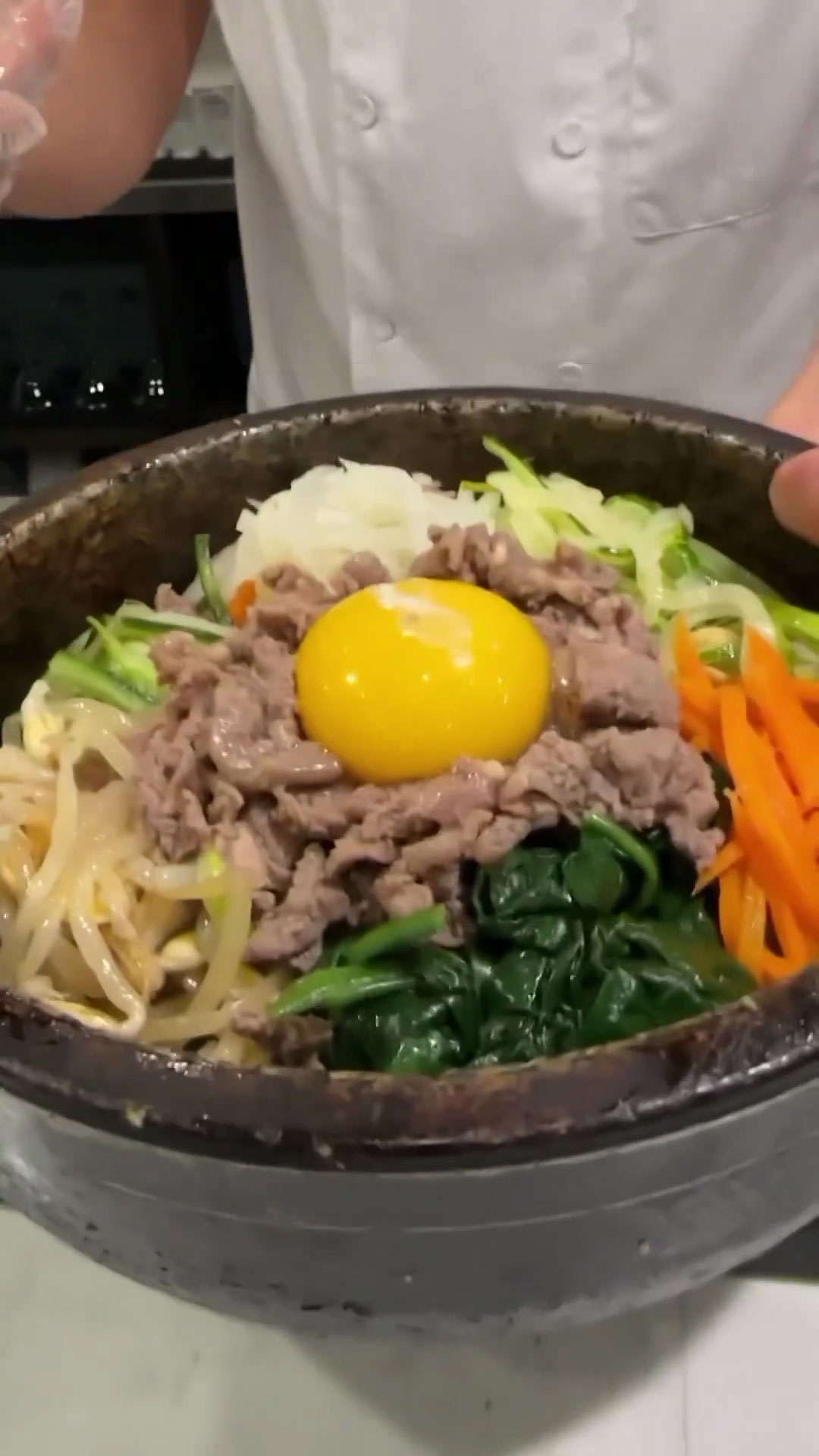
The most common protein of choice for this is either bulgogi or spicy pork. Simply follow my recipe linked here! Whether it’s leftover beef or pork or substituted with ground meat with the same seasonings as those recipes, both will work out and can be used in bibimbap!
If pressed for time or you just want to make it easier, spam or fried eggs will do as well! If you are vegetarian or vegan, tofu or skipping the meat altogether is a great option too!
Bibimbap Sauce
Gochujang or red pepper paste is a unique Korean condiment that is made from fermented pepper flakes. It is thick, salty, and spicy, and it’s used as a base for many Korean dishes!
Making the sauce cannot be any simpler. It’s just a combination of gochujang, sugar, and sesame oil. Thin is out with a bit of water so it’s easy to mix. But no matter how simple this is, it yields a savory and sweet sauce that will definitely elevate this dish. I also like to add an egg yolk on top or to make sure my fried eggs have runny yolk so the bibimbap has additional creaminess and silkiness as you mix.
How to Make Dolsot Bibimbap
First, you need to cook rice, prepare a choice of vegetables, marinate and cook your meat, and prepare the gochujang sauce. My choice of vegetables in this video is spinach, carrots, zucchini, radish, cucumber, and beansprouts. I also prepared bulgogi for this dish.

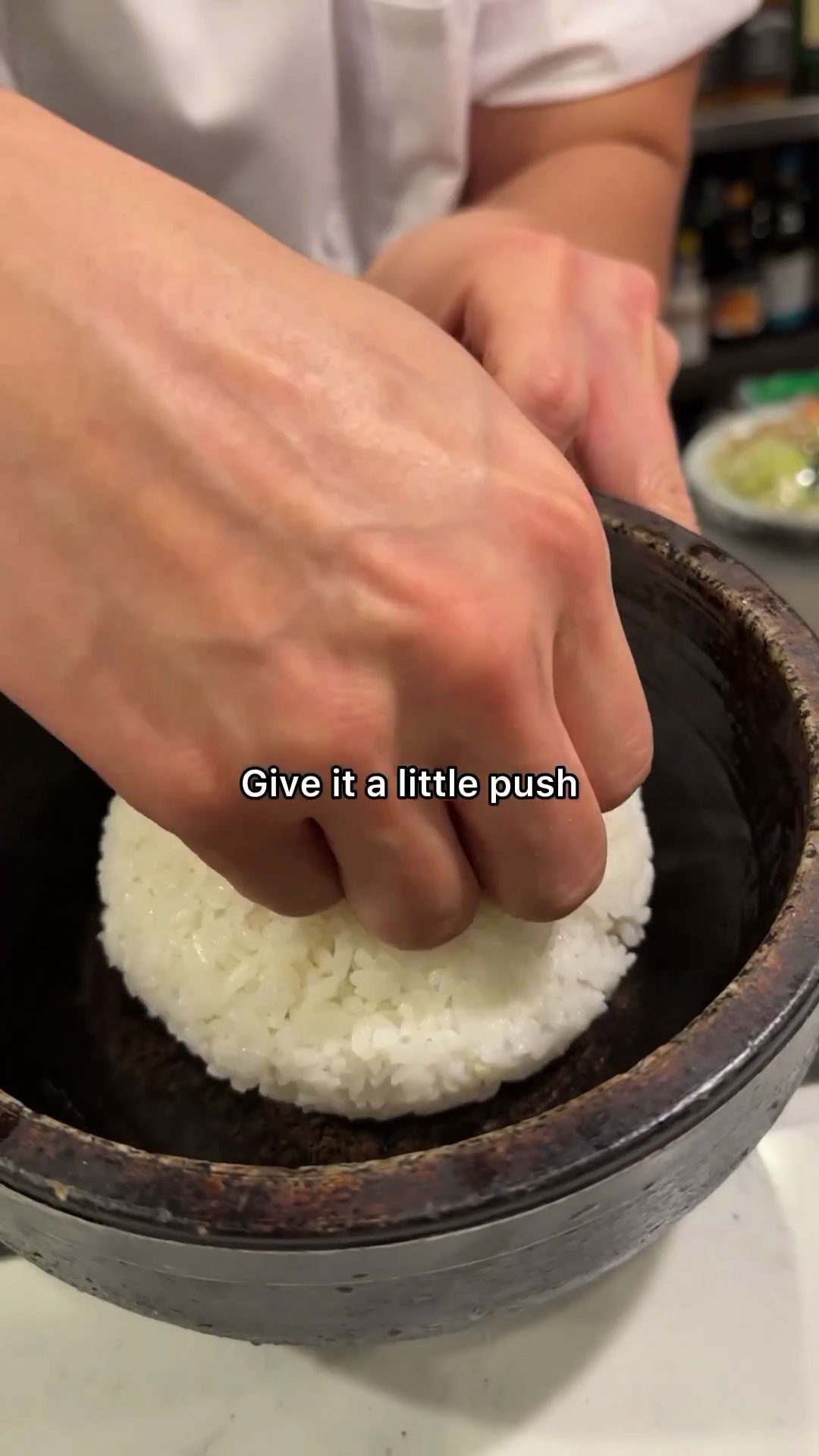
Now to assemble, use a dolsot or stone pot, put some sesame oil at the bottom, place the rice in the middle, and flatten it a bit.

Place your vegetables on top making sure they are alternating colors so it looks pretty, and make space in the middle where you can put the bulgogi. Make a well in the middle of the bulgogi and place an egg yolk or fried egg on top. Place the stone pot on the stove, and in high heat, wait for it to sizzle. The oil at the bottom will crisp up the rice and it’s going to be one of the highlights of this dish!
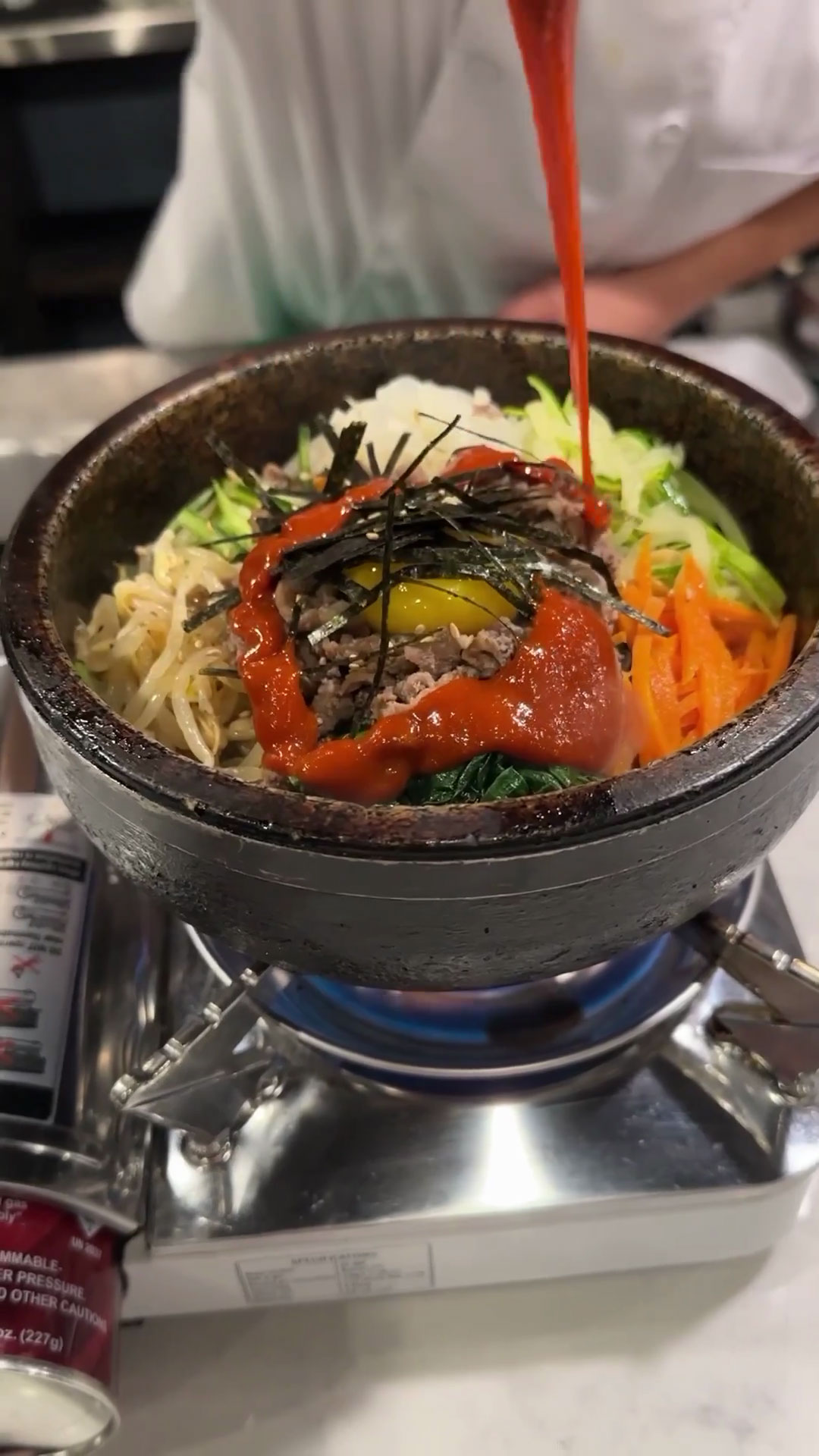
To finish the bibimbap, top it with some seaweed paper and sesame seeds, and drizzle the gochujang sauce!
NOTE: If you don’t have a stone pot, you can also use a skillet so that you can still fry the bottom of the rice. Nevertheless, you can simply use a bowl to make this!
How is Bibimbap Eaten and Storage Instructions
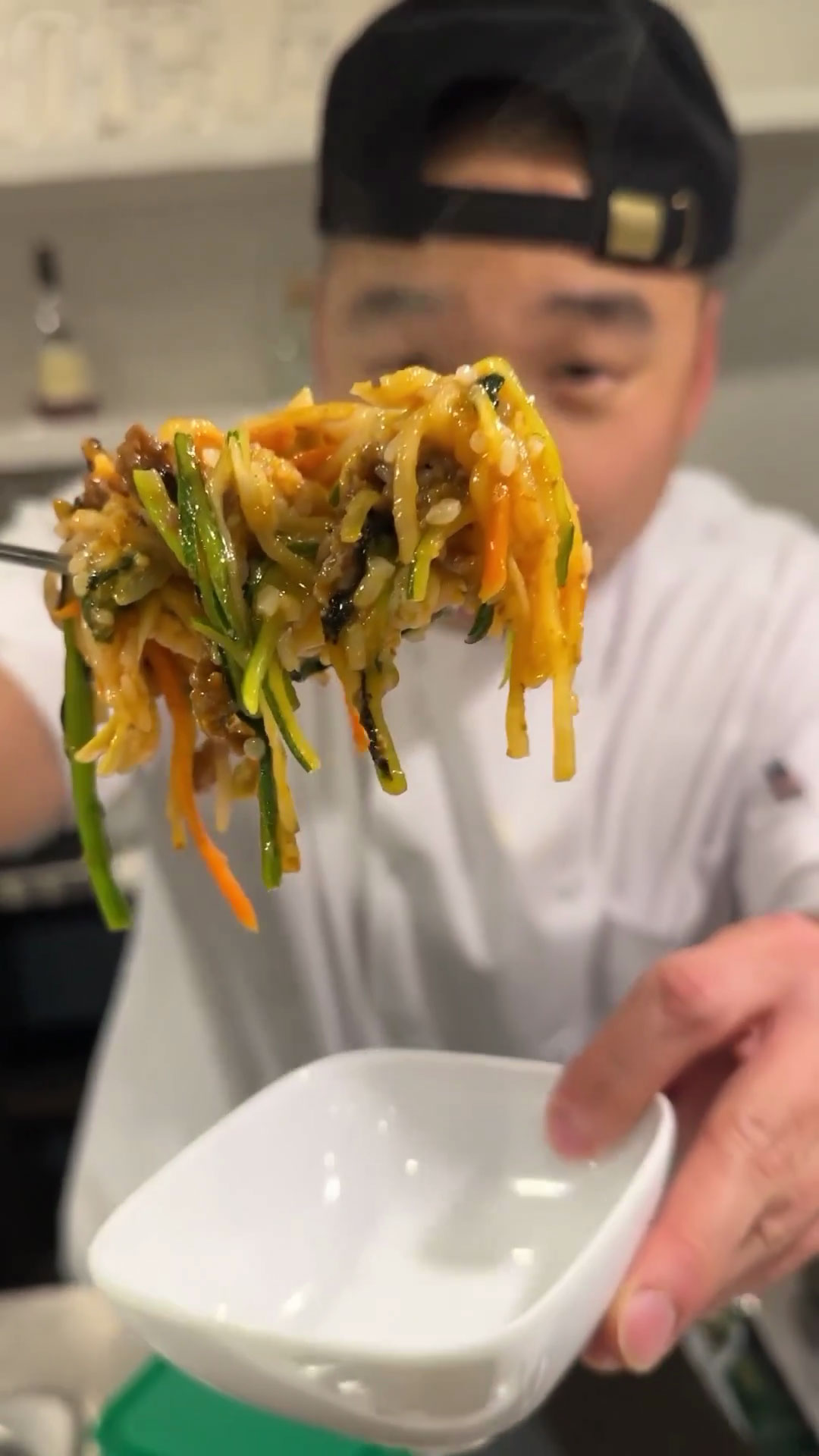
Bibimbap should be served hot and sizzling so that as you mix it, you can still hear popping sounds. Be careful as you consume this as it is hot. Enjoy it by itself or serve it with some neutral soup like seaweed soup!
To eat, mix thoroughly so the meat, veggies, and sauce are evenly distributed. The more you mix it, the better it will taste! Consume it right away! It’s enjoyable to eat right off the pot, but if you think you will have leftovers use a serving spoon to keep it from spoiling.
For any leftover ingredients, simply store them in the fridge for a couple of days and only assemble the bibimbap when you are about to eat them so that you can have a fresh meal anytime.
Other famous and classic Korean dishes you might like:
Make sure to leave a rating, a comment, or tag me on Facebook, Instagram, or Tiktok when you chop them up! Yeobosayo!
Bibimbap Recipe (Korean Mixed Rice)
Equipment
- Dolsot or Hot Stone Pot
Ingredients
- 1 bowl Rice
- Sesame Oil To coat the stone pot
- Seasoned Spinach
- Sauteed Carrots
- Sauteed Zucchini
- Seasoned Radish
- Seasoned Cucumber
- Seasoned Beansprouts
- Bulgogi
- 1 pc Egg Yolk
- Seaweed Paper Cut into strips
- Sesame Seeds
Bibimbap Sauce
- 2 tbsp Gochujang
- 1 tsp Sugar
- 1 tbsp Sesame Oil
Instructions
Rice
- Cook rice or reheat leftover rice.
Seasoned Vegetables
- Slice the carrots, zucchini, radish, and cucumber julienne or equal matchstick sizes.
- Spinach and Beansprouts: Blanche, drain, and squeeze out any water. Season with garlic, salt, and sesame oil.
- Carrots and Zucchini: Saute in oil and season with salt until a bit tender.
- Radish and Cucumber: Salt, drain, and season with sesame oil and sesame seeds.
Protein of Choice
- Season thin sliced beef with soy sauce, sugar, sesame oil, and garlic. Marinate for 30 minutes to an hour.
- Stir fry the beef until cooked. Add onion or green onion according to preference.
Gochujang Sauce
- Combine gochujang, sugar, and sesame oil. Mix thoroughly and set aside.
Assembling Bibimbap
- Put sesame oil in your stone pot ensuring the edges have oil in them.
- Put your rice in the pot, and flatten it a little, making it stick to the edges where there’s oil.
- Place your vegetables on top of the rice and place them in alternating colors.
- Make space in the middle of the veggies and place the bulgogi in it. Make a well in the middle of the meat and place the egg yolk in it.
- Drizzle the sauce on top and heat the stone pot until sizzling hot.
- Garnish with seaweed paper and sesame seeds. Serve hot, mix thoroughly, and enjoy!
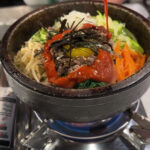

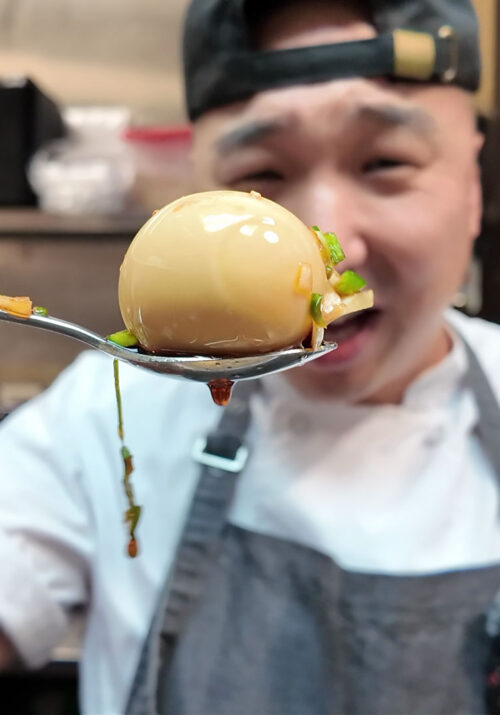



Excellent dish! Thank you!
Pipe Creek, TX
Thank you so much!!!